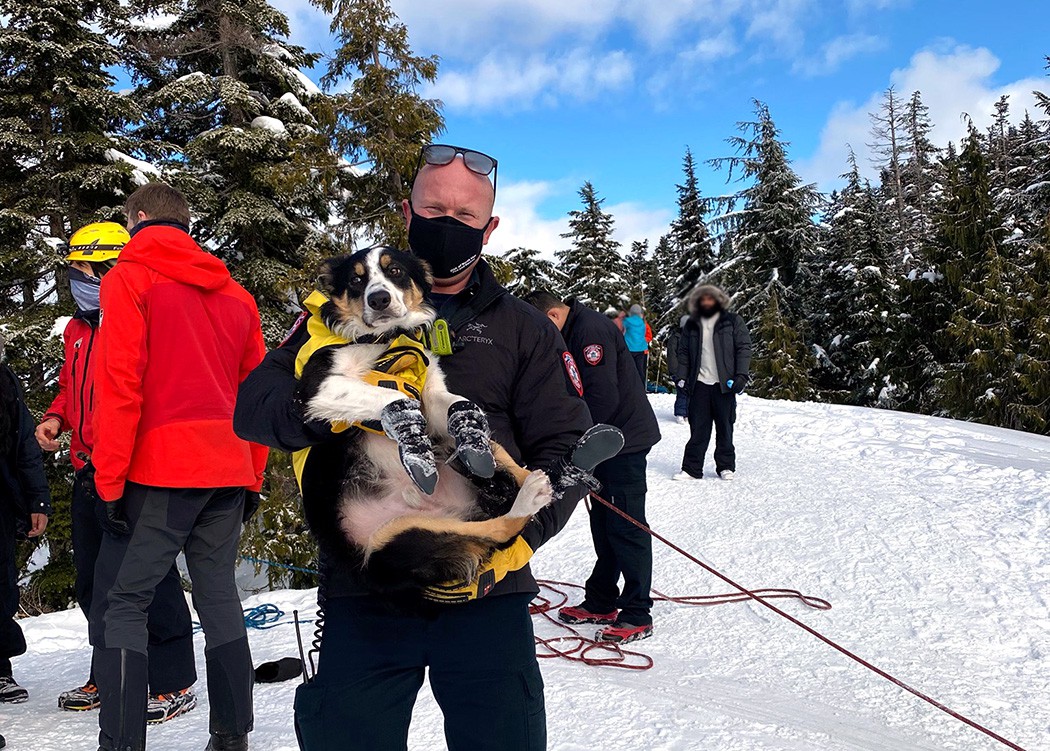Responding to incidents
Our highly-trained firefighters are industry certified to fight fires of all types, from structure blazes to fires in vehicles and boats.
Our firefighters also routinely respond to calls for medical assistance, rescues of all kinds, hazardous material concerns, requests for public assistance, and more.
In 2021, we responded to 5,216 incidents, either independently or as part of a tri-municipal effort. Our 90th percentile turnout time was 2 minutes and 7 seconds, and our 90th percentile total response time was 8 minutes and 50 seconds, meaning we achieved these times or better in 90% of our calls.
Turnout Time is the elapsed time from when a fire engine is dispatched until all firefighters are on the vehicle, properly attired, and heading out the station doors. Total Response Time is the elapsed time from when the 911 call is answered, to when the fire engine arrives at the street address and includes call processing time, turnout time and travel time.
Top 5 Incident Call Outs for 2021
Our firefighters respond to a wide range of incidents, including fires, accidents, rescues, and medical emergencies.
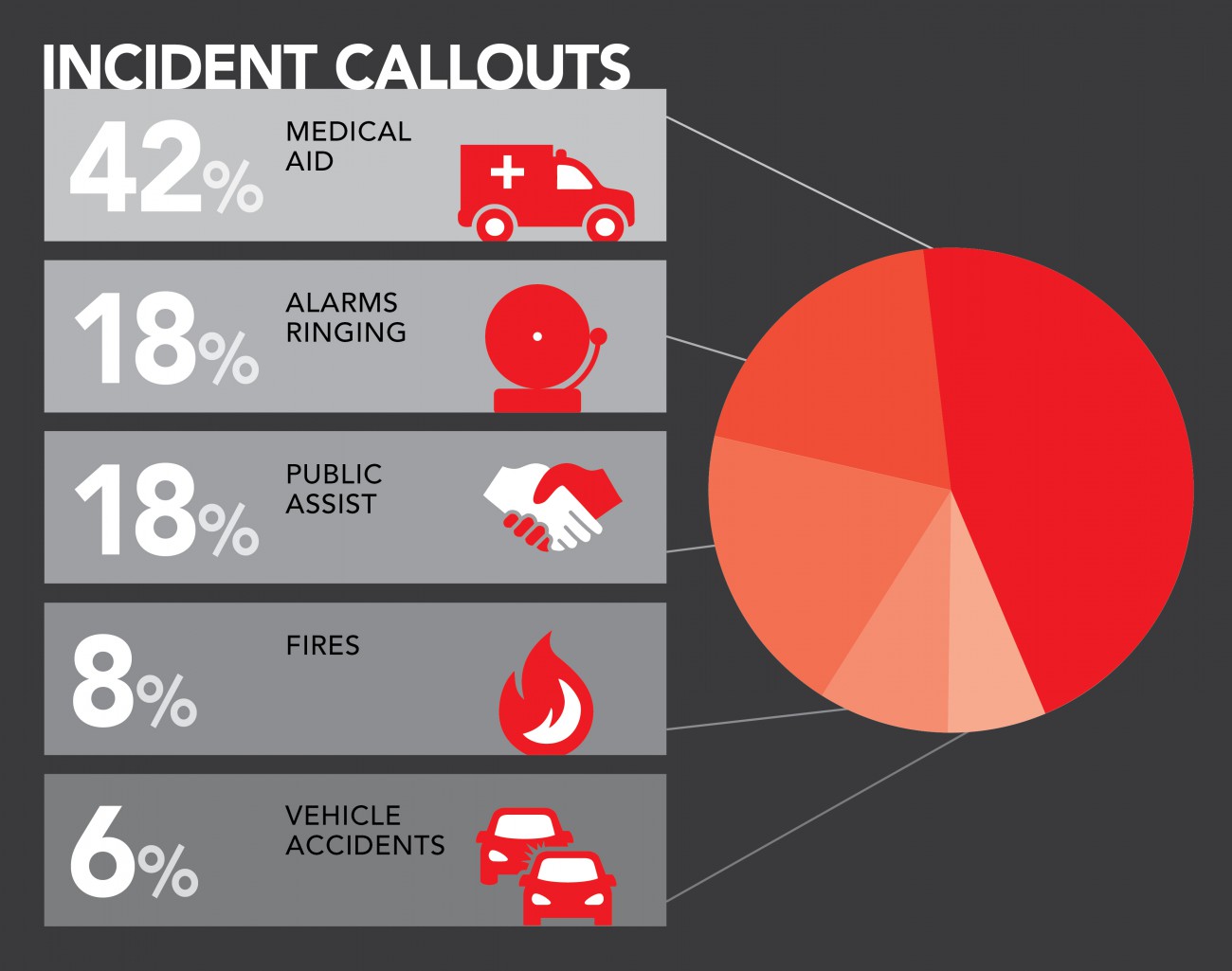
Response Time by Fire Station
Firefighters respond to incidents from one (or more) of five different fire stations, depending on the emergency’s location and size. In 2021, we achieved an overall response time of 8 minutes and 50 seconds for 90% of our emergency responses.
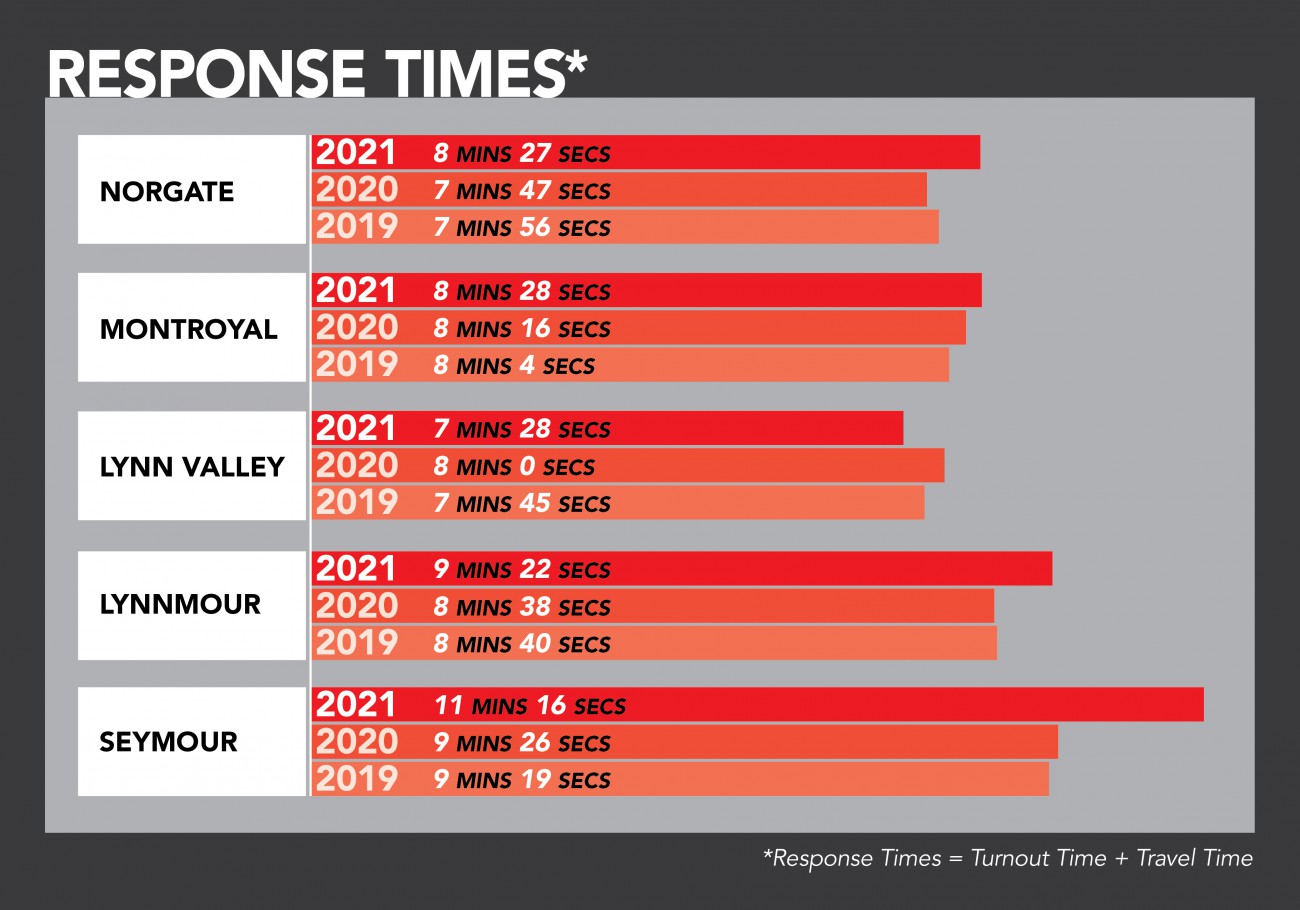
Turnout Time by Incident
In 2021, we achieved a turnout time of 2 minutes, 7 seconds across all incident types for 90% of our responses.
Turnout time measures the firefighters’ ability to stop what they are doing, get to the appropriate fire engine, put on their personal protective equipment, board the fire engine, and safely secure themselves for travel to the emergency.
90th percentile means that nine times out of 10, we meet the times indicated or better.
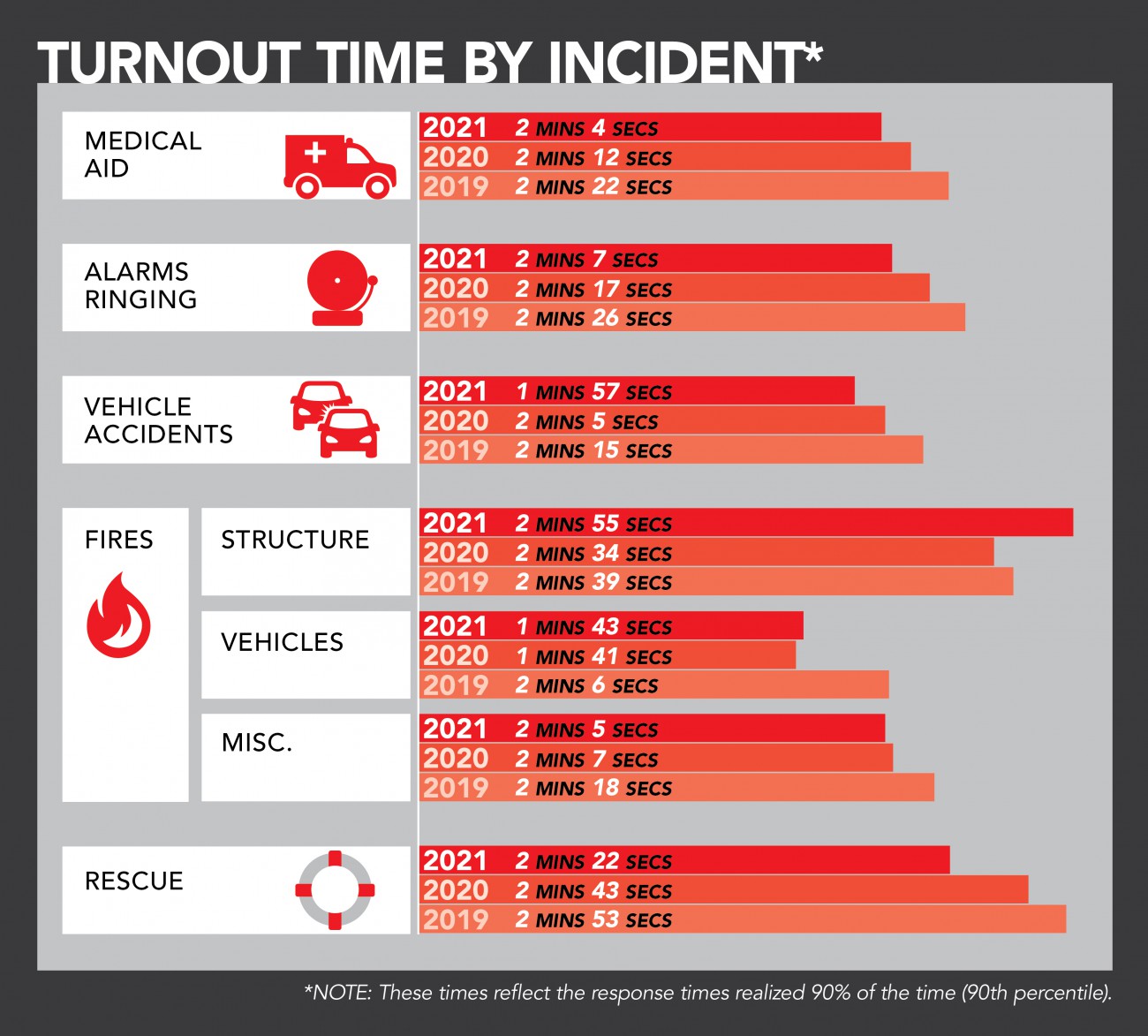
A Closer Look at Technical Rescues
The District of North Vancouver’s urban core is surrounded by hundreds of square kilometres of rugged mountain wilderness, with a vast network of hiking and mountain biking trails intersected by rivers and ravines.
We are also home to Grouse Mountain and Seymour Mountain ski operations and the Grouse Grind, BC Mountaineering Club and Baden Powell trail systems.
Our team is unique in Metro Vancouver because of the number of highly technical rescues we execute each year and the close mutual support relationship we have with the all-volunteer North Shore Rescue (NSR) team.
In 2021, we attended 105 rescue incidents, with 42% occurring on Mount Fromme, Mount Seymour and or Lynn Canyon.
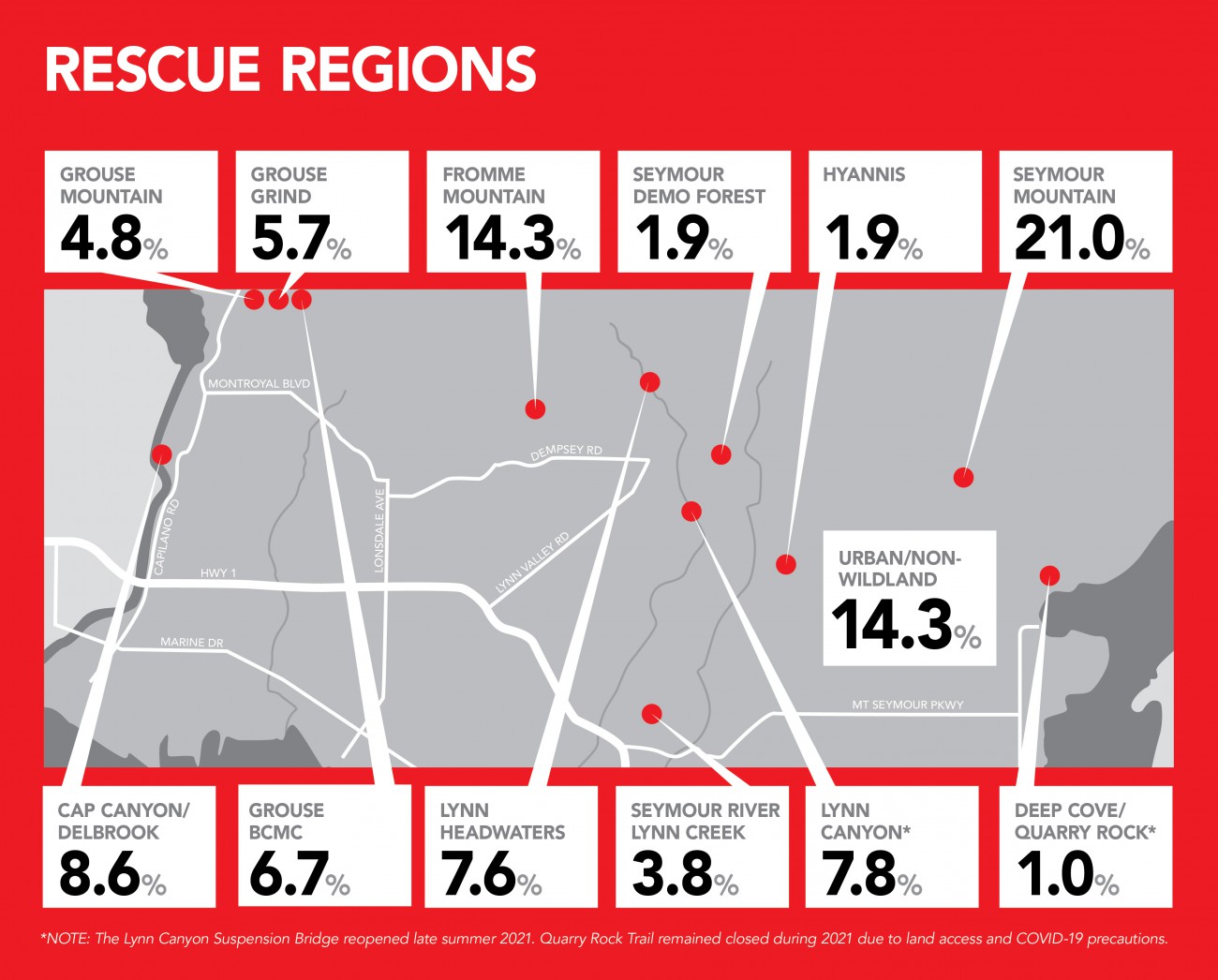
Typical Rescues
In 2021, DNVFRS responded to 105 rescue calls. Of that number, 91% related to outdoor recreation in our forested areas (hikers, mountain bikers, swimmers, kayakers, etc.). Elevator rescues were next at 9%.
Our firefighters are trained to meet, and in many cases, exceed industry standards in high-angle rope rescues and swift-water rescue techniques that are used every summer in Lynn Canyon, Capilano Canyon, and Quarry Rock in Deep Cove.
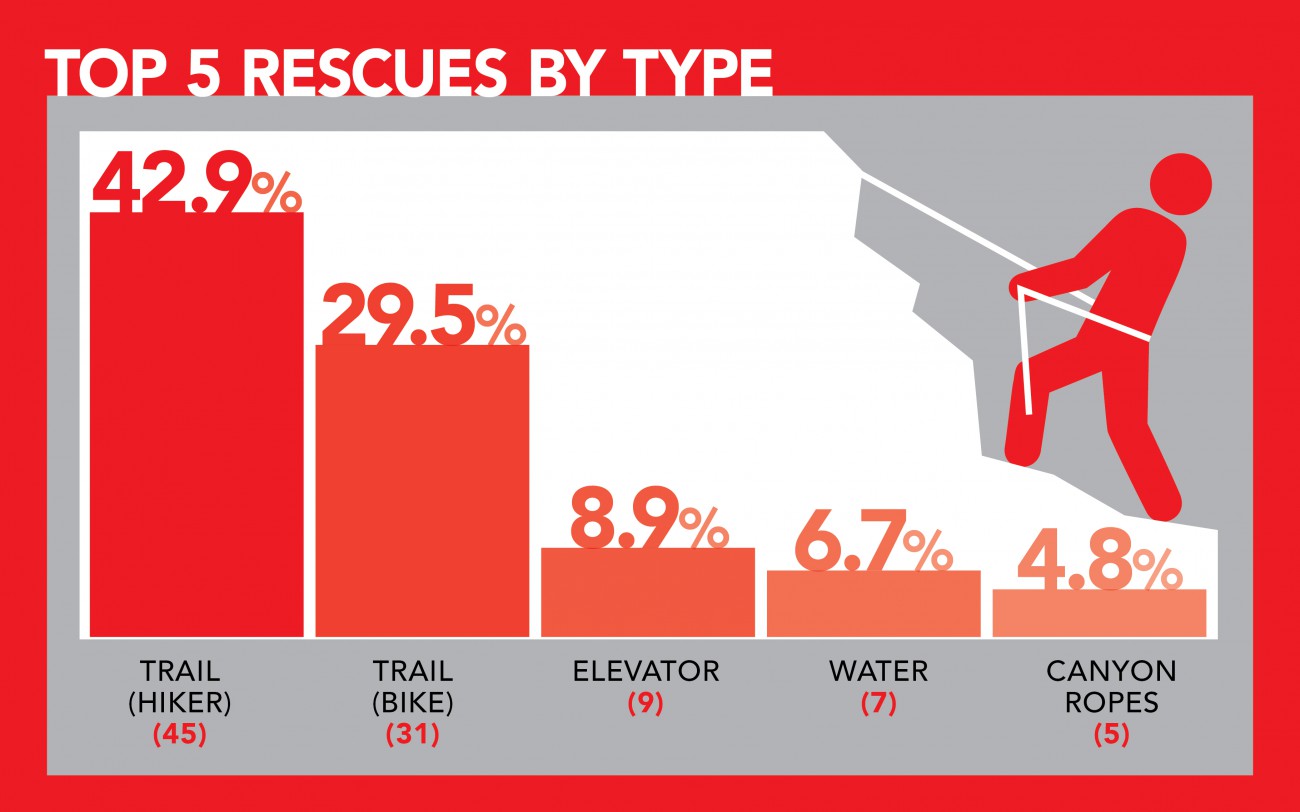
Working with North Shore Rescue
We immediately liaise with North Shore Rescue (NSR) when responding to wildland search and rescues, and technical trail and water rescues that occur in the District to coordinate our efforts and ensure that each agency is aware of the incident.
Our strong working relationship with NSR allows us to capitalize on the skill sets of both of our agencies to best serve residents and visitors, while providing an efficient and coordinated response to all emergencies on the North Shore. We also work collaboratively to exchange information and host training programs that focus on our respective strengths as response agencies.
Due to provincial COVID-19 restrictions, we had limited opportunities to participate in interagency training activities in 2021. We look forward to working collaboratively to further align our training with NSR in 2022.
You can read more about the life-saving services that North Shore Rescue provides on their website.
Responding to Marine Emergencies with Royal Canadian Marine Search and Rescue
We work with Royal Canadian Marine Search and Rescue (RCMSAR) on all marine and waterfront emergency responses in the District.
This includes transporting firefighters and equipment to remote and boat-only access locations, providing water-based information and intelligence for shore-based emergency operations, and performing water rescues in areas that are inaccessible by DNVFRS firefighters.
As with our other partner agencies, we work closely with RCMSAR to share information and provide training that capitalizes on each agency’s strengths. This collaboration includes preplanning and preparing for access to the Indian Arm communities of Cascades, Sunshine Falls, and Woodlands.
Due to provincial COVID-19 restrictions, we had limited opportunities for interagency training activities in 2021. However, we look forward to re-engaging and building upon our close working relationship moving into 2022.
For more information about North Vancouver Royal Canadian Marine Search & Rescue, please visit their website.

